

Elsie Garrett Rice (25 November 1869 Elton, Derbyshire - 27 April 1959 Cape Town [1] was a British-born South African botanical artist and suffragist.


Elsie Garrett Rice (25 November 1869 Elton, Derbyshire - 27 April 1959 Cape Town [1] was a British-born South African botanical artist and suffragist.
Elsie Garret Rice's parents were Mary Gray and Reverend John Feydell Garrett. [2] Elsie and her twin brother John Herbert Garrett were baptised at Elton on 16 January 1870. She and her three siblings, John, Edmund and Amy, were orphaned at an early age and were raised by two of their cousins, sisters Millicent Fawcett and Agnes Garrett. Millicent was a leader in the British Suffragist Movement and was married to Sir Henry Fawcett, sometime Postmaster-General, who had been blinded in a hunting accident. Agnes Garrett was also a suffragist, an interior designer and founder of the Ladies Dwellings Company.
Elsie Garret studied at the Slade School of Art and in Florence.
Elsie Garret taught at Bedales School, which had been founded by her brother-in-law John Badley. At Bedales she met her future husband, Charles Emmanuel Rice, headmaster of King Alfred School, Hampstead. In 1901 she was living with her husband and one son and one daughter in Hampstead. By 1911, Elsie, was a 41-year-old art teacher and living at Steep, Hampshire with her 45-year-old husband and two children, Gabriel Edmund 11 and Agnes Rosemary 10, both born at Hampstead. Charles Rice qualified as a physician in 1918. [3]
Elsie became estranged from her husband and moved to South Africa in 1933, at first living in Rondebosch and later moving to Camps Bay with her daughter Rosemary Agnes Hawthorne and son-in-law Dr Charles Barnard Hawthorne, who had married in Coventry in 1923, and followed Elsie to the Cape in 1934. [4] Elsie's grandson was actor Nigel Hawthorne.
She started painting wild flowers and later illustrated Robert Harold Compton's 'Wild Flowers of The Cape of Good Hope' which was published in 1951. She also illustrated Harry Hall's book 'Common Succulents' (Longmans, London, 1955) [5] [6]

Dame Millicent Garrett Fawcett was an English political activist and writer. She campaigned for women's suffrage by legal change and in 1897–1919 led Britain's largest women's rights association, the National Union of Women's Suffrage Societies (NUWSS), explaining, "I cannot say I became a suffragist. I always was one, from the time I was old enough to think at all about the principles of Representative Government." She tried to broaden women's chances of higher education, as a governor of Bedford College, London and co-founding Newnham College, Cambridge in 1875. In 2018, a century after the Representation of the People Act, she was the first woman honoured by a statue in Parliament Square.
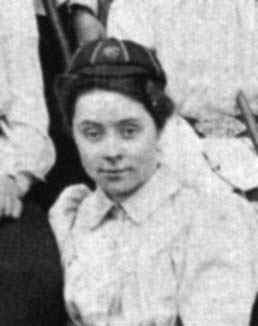
Philippa Garrett Fawcett was an English mathematician and educationalist. She was the first woman to obtain the top score in the Cambridge Mathematical Tripos exams. She taught at Newnham College, Cambridge, and at the normal school in Johannesburg, and she became an administrator for the London County Council.
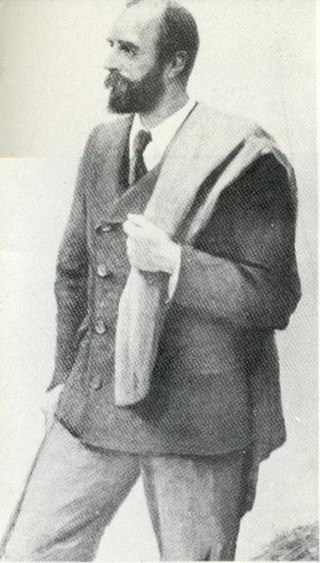
John Haden Badley was an English author, educator, and founder of Bedales School, which claims to have become the first coeducational public boarding school in England in 1893.

Agnes Maude Royden, later known as Maude Royden-Shaw, was an English preacher, suffragist and campaigner for the ordination of women.
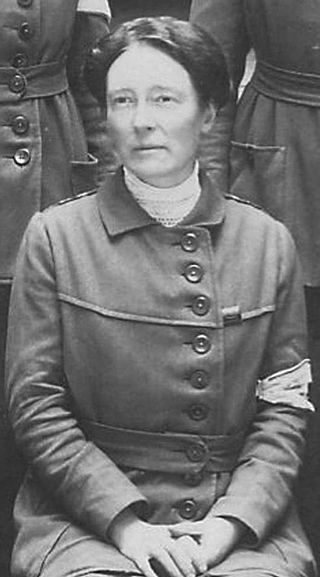
Louisa Garrett Anderson, CBE was a medical pioneer, a member of the Women's Social and Political Union, a suffragette, and social reformer. She was the daughter of the founding medical pioneer Elizabeth Garrett Anderson, whose biography she wrote in 1939.
Robert Harold Compton was a South African botanist. The Compton Herbarium at Kirstenbosch National Botanical Garden, which he founded in Cape Town in 1939, was named in his honour.

Dame Margery Irene Corbett Ashby, was a British suffragist, Liberal politician, feminist and internationalist.

Harriet Margaret Louisa BolusnéeKensit was a South African botanist and taxonomist, and the longtime curator of the Bolus Herbarium, from 1903. Bolus also has the legacy of authoring more land plant species than any other female scientist, in total naming 1,494 species.

Lady Frances Balfour was a British aristocrat, author, and suffragist. She was one of the highest-ranking members of the British aristocracy to assume a leadership role in the Women's suffrage campaign in the United Kingdom. Balfour was a member of the executive committee of the National Society for Women's Suffrage from 1896 to 1919. As a non-violent suffragist, she was opposed to the militant actions of the Women's Social and Political Union, whose members were called the suffragettes.

Agnes Garrett was an English suffragist and interior designer and the founder in 1888 of the Ladies Dwellings Company.
Rhoda Garrett was an English suffragist and interior designer.
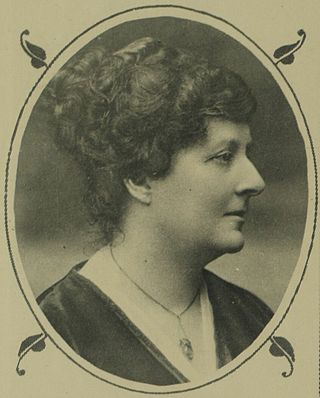
Nessie Stewart-Brown JP was a British suffragist and Liberal Party politician. Her name and picture is on the plinth of the statue of Millicent Fawcett in Parliament Square.

Priscilla Bright McLaren was an English activist who served and linked the anti-slavery movement with the women's suffrage movement in the nineteenth century. She was a member of the Edinburgh Ladies' Emancipation Society and, after serving on the committee, became the president of the Edinburgh Women's Suffrage Society.

Julia Scurr was a British politician and suffragette.
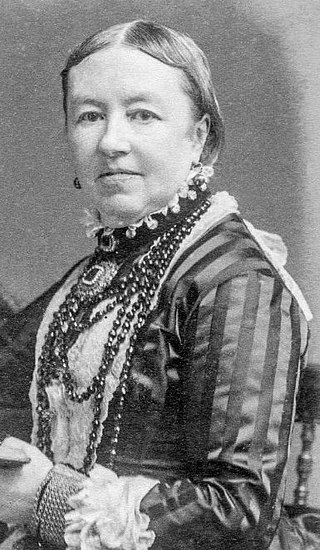
Agnes Pochin was an early British campaigner for women's rights. She funded campaigns, wrote one of the first tracts and was one of the three speakers at the first suffrage meeting in Manchester.

Harry Hall, was a British-born horticulturist, botanist and succulent plant authority.

Annot Robinson, nicknamed Annie, was a Scottish suffragette and pacifist. She was sentenced to six months for trying to break in to the House of Commons. She helped to found the Women’s International League for Peace and Freedom.

The statue of Millicent Fawcett in Parliament Square, London, honours the British suffragist leader and social campaigner Dame Millicent Fawcett. It was made in 2018 by Gillian Wearing. Following a campaign and petition by the activist Caroline Criado Perez, the statue's creation was endorsed by both the Prime Minister of the United Kingdom, Theresa May, and the Mayor of London, Sadiq Khan. The statue, Parliament Square's first monument to a woman and also its first sculpture by a woman, was funded through the government's Centenary Fund, which marks 100 years since some women won the right to vote. The memorial was unveiled on 24 April 2018.

Amy Garrett Badley was an English educator, suffragist, co-founder of Bedales School, and a vice president of the National Council for Equal Citizenship.
John Feydell Garrett.